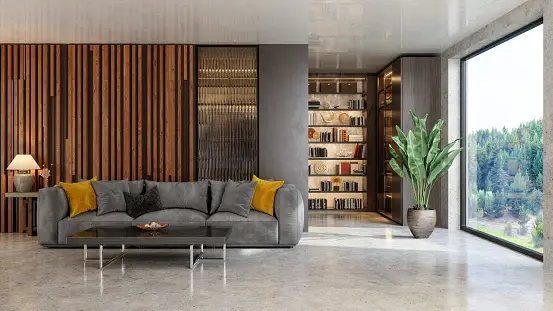The Advantages of Lightweight Steel Construction in Modern Architecture
Architecture is ever-evolving, and the quest for innovation and sustainability remains at the forefront. One such innovation that has gained traction in recent years is steel construction. This method offers numerous advantages that are reshaping the way modern buildings are designed and constructed.
From eco-friendliness to structural integrity, lightweight construction, often utilising steel flooring joists, is transforming the architectural landscape. So, this post will delve into the key advantages of this construction method and explore why it has become a preferred choice for architects and builders alike. We will discuss about Lightweight Steel Construction.

Sustainability and Environmental Benefits
Modern architecture places a strong emphasis on sustainability and reducing the carbon footprint of buildings. Lightweight steel construction aligns perfectly with these goals.
Steel is one of the most recycled materials in the world, making it a sustainable choice for construction. Furthermore, the manufacturing process for this metal produces minimal waste, contributing to a greener building industry. As such, by using flooring joists and other components made from this robust material, architects can design eco-friendly structures that are both durable and environmentally responsible.
Must Read This: GB WhatsApp Download 53 MB APK
Structural Integrity and Durability
One of the standout features of lightweight steel is its exceptional strength-to-weight ratio. This metal is renowned for its structural integrity, allowing architects to create innovative and complex designs without compromising on stability. Its resistance to corrosion, pests, and fire makes it an ideal choice for long-lasting structures. This durability ensures that buildings constructed with lightweight steel can withstand time, reducing the need for extensive maintenance and repairs.
Versatility in Design
Architects and designers cherish the versatility that lightweight construction offers. This metal’s inherent strength allows for the creation of expansive open spaces, soaring ceilings, and large window openings without the need for bulky support columns. This design freedom empowers architects to craft visually stunning and functional spaces that cater to modern living and working environments. Steel flooring joists, in particular, provide a sturdy and flexible foundation for various types of flooring materials, from wood to concrete.
Cost Efficiency
Efficiency is a significant consideration in modern architecture, and lightweight steel construction excels in this aspect. The precision of steel fabrication ensures that components fit together seamlessly, reducing construction time and labour costs. Additionally, this metal’s long lifespan and minimal maintenance requirements result in cost savings over the life of the building. These cost efficiencies make lightweight steel construction an attractive choice for residential as well as commercial projects.
Speed of Construction
In construction, time is often of the essence. Lightweight construction methods facilitate rapid building assembly. The pre-fabrication of components allows for quicker on-site construction, reducing project timelines. This speed of construction can be a decisive factor for clients who want their buildings completed efficiently, whether for commercial purposes or as a residence.
Resistance to Natural Disasters
The frequency and severity of natural disasters have tremendously increased due to climate change. In this context, lightweight steel construction offers enhanced resilience to these challenges. Steel structures can withstand earthquakes, hurricanes, and severe weather conditions, providing occupants with a safer environment. This level of structural reliability is particularly crucial for regions prone to natural disasters.
Conclusion: Lightweight Steel Construction
Steel construction, emphasising sustainability, structural integrity, versatility, cost efficiency, speed of construction, and resistance to natural disasters, is revolutionising modern architecture. The use of this metal in architecture, including steel flooring joists, empowers architects and builders to create innovative and environmentally responsible structures that cater to the demands of the 21st century. As the architectural landscape continues to evolve, lightweight steel construction will remain a cornerstone of sustainable and forward-thinking design, offering numerous advantages that shape the future of architecture.
Author: Alison



